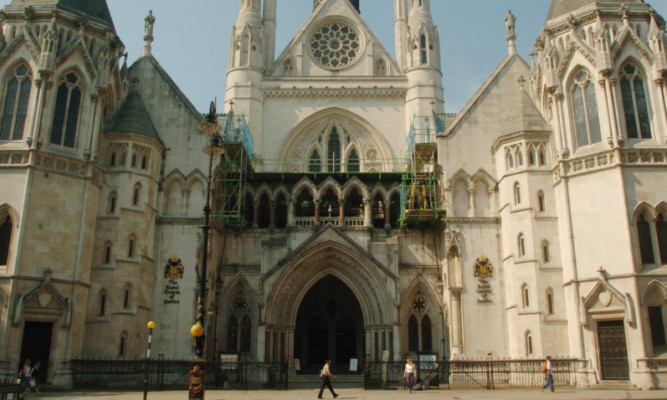An armed raider and bomb hoaxer, linked to his crimes by his distinctive Dundee accent, failed to convince judges he was not the nuisance caller.
David Williamson, 51, from Dundee, was told at the Appeal Court in London that his total 10-year sentence was, if anything, “generous”.
He was jailed at Kingston Crown Court in London in March last year after he was convicted of the string of terror calls and shop raids across the country.
He challenged his conviction and sentence in relation to the bomb hoaxes but learned on Thursday that he had failed.
Williamson embarked on a crime spree in October 2012 targeting shops in Maidstone, Kent, central London, and in Warrington, Cheshire.
In one raid, he produced an imitation gun and demanded cash from a lone receptionist at the Delmere Hotel near Hyde Park.
It later emerged that Williamson had made a series of hoax phone calls to police before the robberies claiming there were bombs planted across London and the rail network.
He had also left a note in the Harrods department store, inside an envelope, claiming that a bomb was about to go off.
Williamson received an eight-year term for the robberies plus another two years for five counts of “communicating false information with intent”.
Judge Simon Tonking, sitting with Lord Justice Laws and Mr Justice Gilbart, said a man “resembling” Williamson had been seen entering Harrods. The same man had also been spotted in a phone box from which one of the hoax calls was made.
Williamson was also linked to the hoaxes by mobile phone and fingerprint evidence.
On top of that, a voice expert had listened to recordings of the hoax caller, concluding that he shared Williamson’s “central Scottish” burr.
“Mr Williamson originally hails from Dundee,” explained the appeal judge.
Rejecting his conviction challenge, Judge Tonking said the evidence against him was “compelling” and there was “no reason to doubt the safety of these convictions”.
The judge concluded: “The sentence was entirely appropriate, if not generous”.
